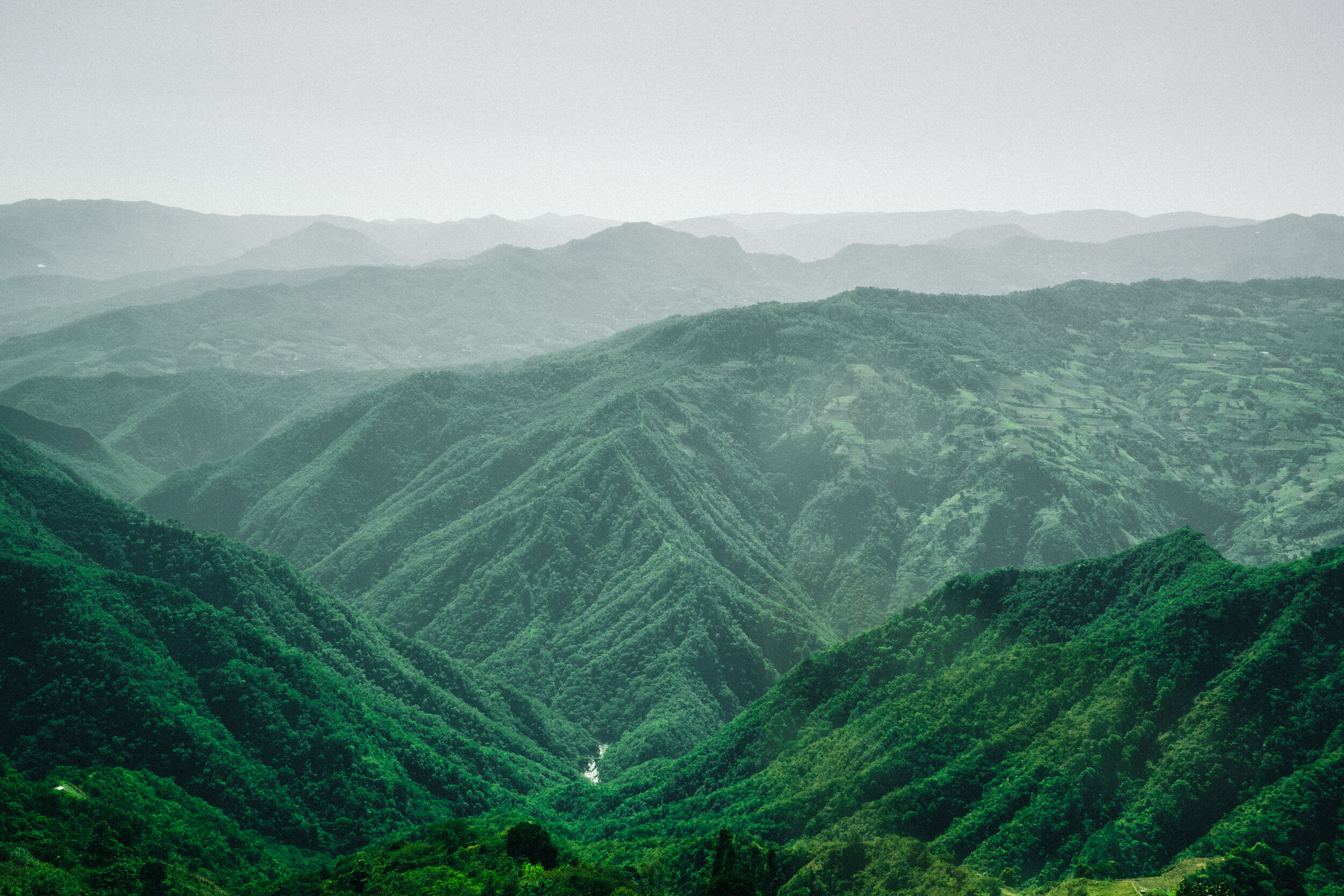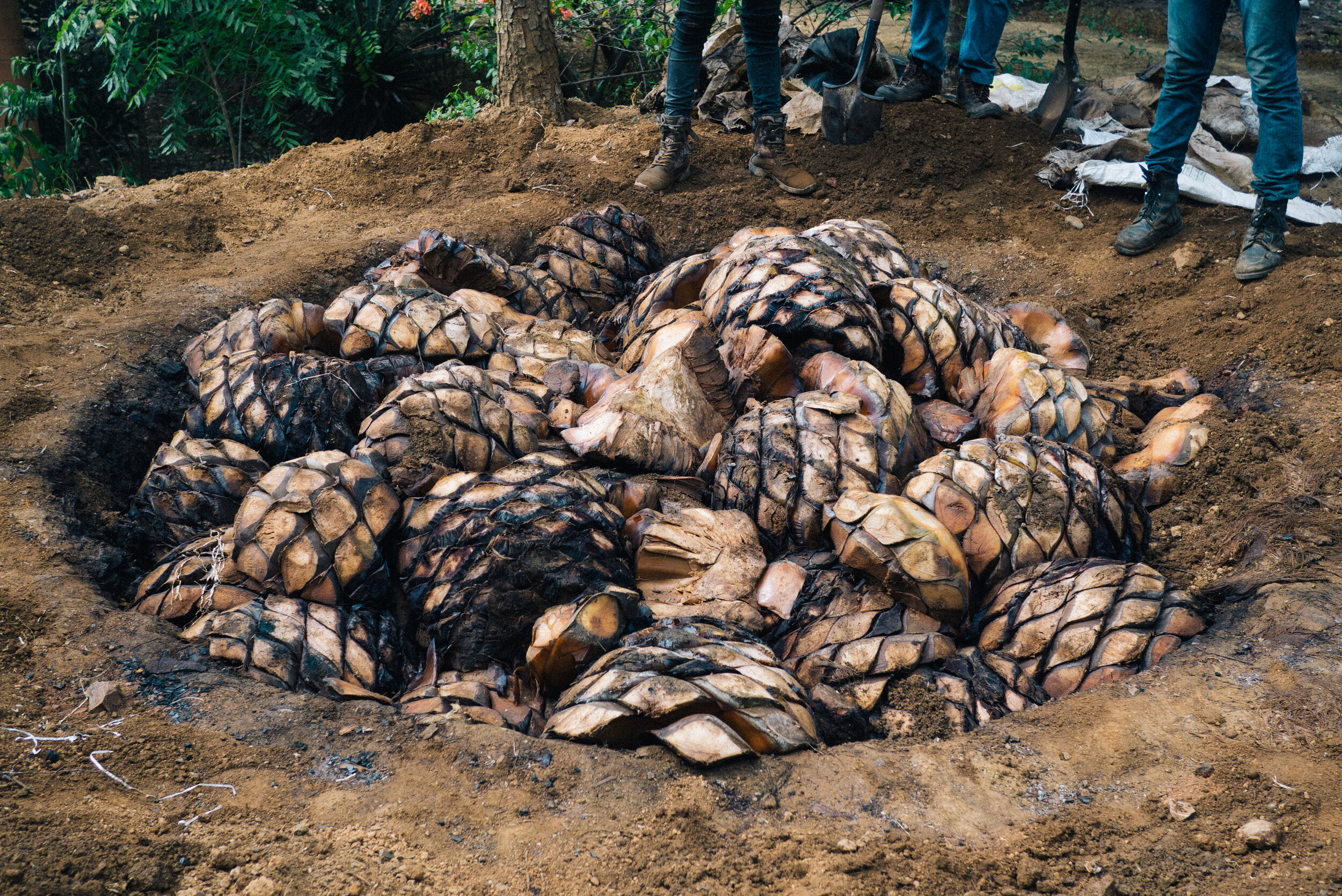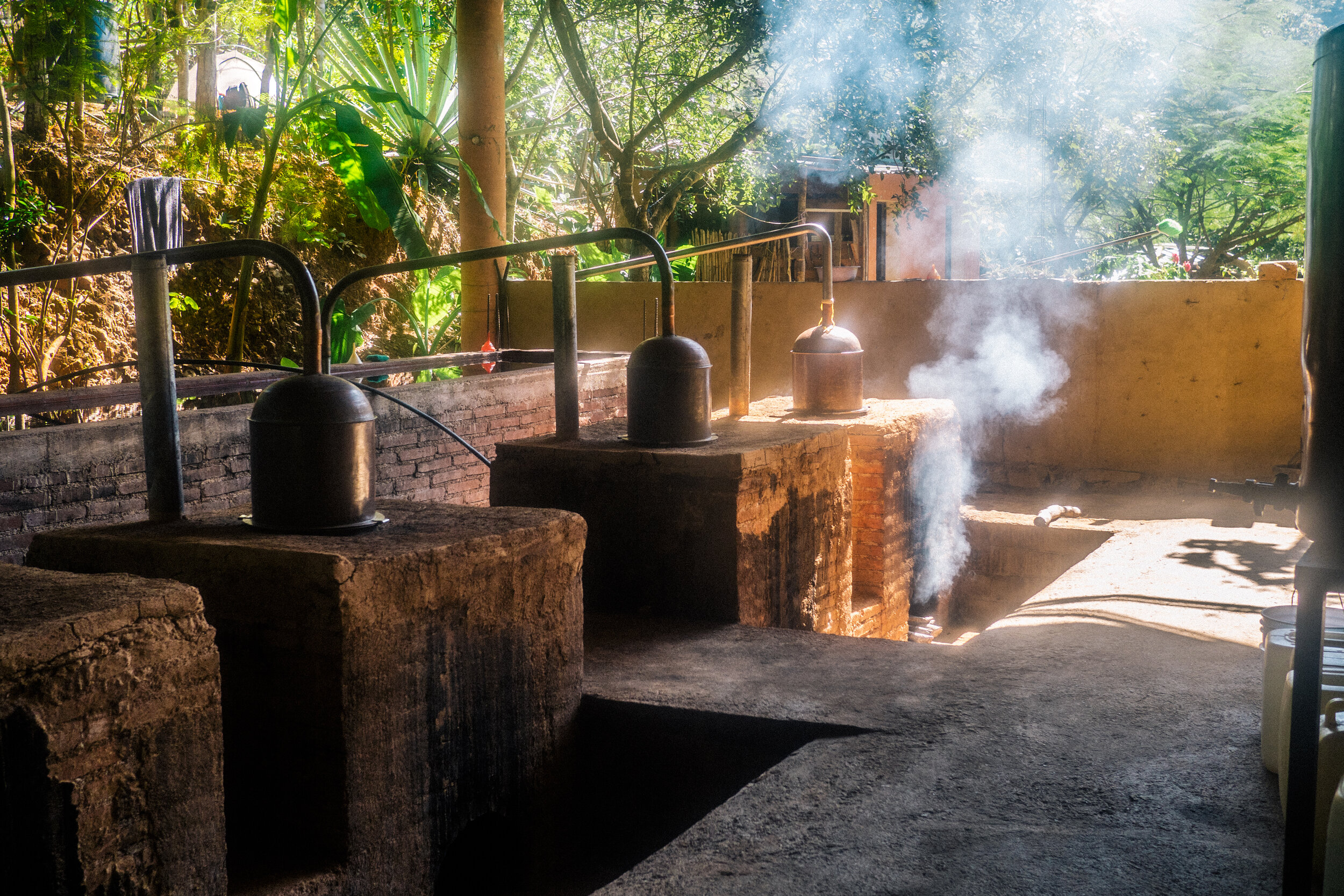For Everything Good — Experiencing Mezcal in Oaxaca City, Mexico
I wake at 5am and walk into the sleepy, cobbled streets of Oaxaca City, Mexico to meet the group I’m travelling with. Introductions are taking place and motion sickness medication is being passed around as Clayton Szczech—one of our guides and owner of Experience Agave—gently warns us of the trip we are about to undertake.
“Each of you will think you’ve made a terrible decision at one stage of this drive,” he says. “But you will all think it’s been worth it when we get there.”
Photography by Josh Smith
We pack our luggage and start on the six-hour journey that winds through the Sierra Norte Mountains. The sun finally starts to rise and we stop for a breakfast of spiced coffee and large tortillas filled with egg, thin slices of beef, and salsa. Breakfast is followed by hours of driving, winding through bumpy mountain roads that cut through precariously steep villages. Finally, we see a roof in the distance, close to the bottom of the camouflaged mountains, and to a formidable river. We roll down the final dirt road and come to the palenque (distillery) of Mezcal Tosba.
Mezcal is synonymous with Mexico’s Oaxaca state, located in the country’s southwest, along its Pacific coast. Though nine states in Mexico are allowed to make the agave distillate under the Mezcal Denomination of Origin (DO), Oaxaca is at the epicentre of it all, accounting for roughly 85% of all mezcal produced in Mexico. The complex liquid has been on a meteoric rise from a product that farmers would make in the slow season and sell in their local markets to an internationally coveted drink that adorns the shelves of the best bars in the world.
However, it’s not hard to understand its popularity when you start to dig into its rich heritage. You don’t even have to go far from the state’s capital to find producers making great mezcal—a short, hour-long trip from the city would suffice—but Tosba is a unique proposition, and worth the much longer journey.
The distillery is simple but generous, flanked by fields of agave, vegetables, and coffee, that quickly turns into the dense, mountainous jungle. Four family dogs run out to meet us, with Choco, the most excitable of the bunch already starting to make friends with the group. We’ve come here to get our hands dirty, and the first job is to empty the earthen oven where the agave had been roasting for days.
As we pull out the sweaty, darkened chunks of Espadín agave, each of us tastes the roasted slabs, which have softened and caramelised, taking on a subtle flavour from the fire. These are then chopped up, charred edges removed, and pulped by a stone wheel pulled by a horse that’s more interested in eating the agave than in doing much work.
Unlike tequila, which is made exclusively from Agave tequilana, Mezcal is not defined by one varietal. It can be produced using many types of agave and is typically sold as an expression of a specific species. Espadín, the most common, takes five to 10 years to grow, but the more coveted mezcals are made from a myriad of other varieties, such as the petite, spikey Tobala, the wild, broad-leafed Tepextate, and the hedgehog-like Madrecuixe. Some species take over 20 years to become fully mature, and along with the influence from the terroir each will impart distinct varietal flavours to the spirit.
Mezcal is also known for being smoky, a profile the producers in Oaxaca are more partial to than those in other states. The level of smoke should be handled delicately, though; as fire is used in all parts of the process, it becomes a taint as quickly as it becomes a welcome addition. The flavours of mezcal can be pungent and bracing, but also subtle and nuanced. It demands a certain level of attention and restraint. You don’t down a shot of mezcal—you sip.
Mezcal Tosba, unlike most producers, is a fairly new endeavour, founded in 1999 by Edgar González Ramírez and his cousin Elisandro González-Molina. After studying and working in California, they had the idea of restarting Mezcal production in their own region and, in doing so, bringing jobs to villages that see so many young adults leave to get work across the border. These villages are predominantly indigenous communities, known for their traditions of handicrafts, art, sculpture, weaving, food, and drink that make Oaxaca such a destination, but are some of the poorest areas in Mexico.
Mezcaleros (a term for those who distill mezcal) inherit techniques and practices from the generation before them, and most will question very little how things are done. Differences in process between palenques are common, and it can be hard to gather why certain people have chosen to do things the way they do. The lack of established traditions at Tosba has allowed Edgar to find his own methods of making mezcal, which have evolved since he started and are still evolving. That being said, Edgar’s methods are still firmly rooted in the tradition of mezcal production of the fire pit, a stone wheel and a still.
““The complexity is created in fermentation, and concentrated in distillation.””
The other unique aspect of Tosba is its place in the Sierra Norte mountains, a location that helps focus its founders on making a sustainable endeavour that takes as little from the land as it can, and gives back in equal measure. Their palenque is solar-powered, and Edgar is consciously taking steps to farm agaves in an eco-friendly manner.
Mezcal, as it stands, has a sustainability problem. Agaves in Oaxaca are being overfarmed without a thought for when they will come back. Clayton remarks that if you’re drinking a ‘wild’ variety of mezcal, it might not be seen again for another 10 to 15 years. Mezcal’s pursuit of the rare, old, and wild—one of its biggest selling points—has become its greatest weakness.
As with everything, there are swings of demand. On the second day, Paco, another mezcalero drops off a trailer of huge agaves from Durango, a mezcal-producing state that doesn’t suffer from over-farming, as its mezcal industry is less developed than Oaxaca’s. He has made the 24-hour drive for a chance to collaborate with Edgar, and learn more about how others make their mezcal. As we remake the fire to roast the agave hearts, I ask if Paco thinks the fire is ready. ‘‘I have no idea,” he says. “This is not how we make fires.”
As with all mezcal, fermentation is spontaneous, and has more effect on the final flavour than it’s given credit for. Clayton Szczech, the founder of Experience Agave, estimates it accounts for 50% or more of the spirit’s profile, an astounding figure for a drink so linked with the plant that is used. “The cooked agave gives you the basic, fundamental flavor of the mezcal,” explains Clayton. “The complexity is created in fermentation, and concentrated in distillation.”
The open wooden fermenters harbour yeast, as does the air and the palenque itself. Once pulped, the light brown, fibrous mounds are left for a few days before being topped up with water to ferment for around a week or longer, depending on how the native yeast is behaving.
We are specifically here to see a ‘Mezcal de Pechuga’ being made—a type associated with weddings that uniquely is defined by its inclusion of fruit and meat in the distillation process rather than the use of a specific varietal. For this batch, a turkey was chosen to be dispatched, its thigh hung in the clay pot and the rest used in the evening’s dinner. The fruits are foraged or bought in the local village: small bananas; a wild, tart plum; and some cinnamon is all packed in a bag that will hang over the distilling vat. The turkey is a traditional addition that is meant to purify the drink in a spiritual sense, but does not add much to the flavour.
Throughout the day, we eat and relax with Edgar’s family. The sons play in a way that you’d expect kids who grow up on a farm would do (bikes, ropes, and getting a little too close to machetes). Edgar’s wife, Andrea is as involved with the palenque as he is, facilitating bottling runs, handling the money, and making sure everyone is fed. This family atmosphere highlights why Edgar has opted to return to Oaxaca to start this business. Many locals lose this context when they leave for the United States. The lucky ones get to see their family once a year, and the less lucky ones, due to their immigration status are never able to travel home until they come back for good.
We watch the second distillation of the batch as the sun starts to go down, tasting first pullings that are pungently tropical but evaporate off the tongue as soon as it passes our lips. As tastings are pulled every half hour, the profile evolves from stone fruits to a deeper, vegetal flavour that is more befitting of the massive, almost prehistoric-looking agave plants that surround the distillery. The mezcalero’s job is to blend the different pullings (the head, heart and tails) to create the flavour profile he wants. Only the start of the heads are discarded, with the rest sectioned in increments to be blended later.
The links to the worlds of lambic and wine keep cropping up, with blending, spontaneous fermentation, and terroir finding their place in each beverage category. As the sun finally sets, and as we sit around the simmering distillation pots, the mezcal starts to evolve again. This time, the change is less about the flavour, and more about the way it fits into this social, shimmering place and time.
As we sit in near darkness by the fire of the still, deep into the night, I start to think about how expansive mezcal seems. How it carries the weight of culture, born and evolved over thousands of years, but is ever relevant today. How it encapsulates a country through native plants and yeasts that feel as unique as the land they inhabit. How it raises questions of stewardship and the perils of demand, but equally holds the opportunity for transformation for some of the regions of Mexico that need it most. And how it allows people like Edgar and Elisandro to bring something back to the villages they grew up in.

































